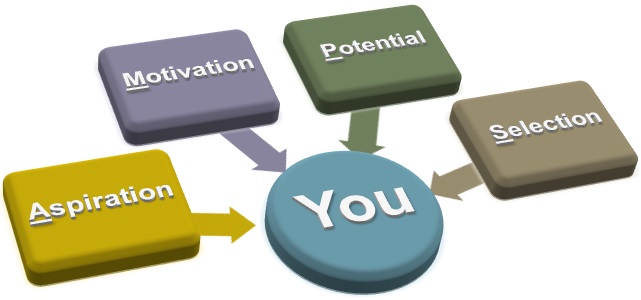A Coaching Model Created by Deborah Pendleton-Maurice
(Executive and Life Coach, UNITED STATES)
 The Distinguish Your Career coaching practice serves clients who aspire to excel in their careers. To do so requires the ability to distinguish (as in decide on) one’s calling and therefore career, and to distinguish oneself in that career.
The Distinguish Your Career coaching practice serves clients who aspire to excel in their careers. To do so requires the ability to distinguish (as in decide on) one’s calling and therefore career, and to distinguish oneself in that career.
Our belief is that people are amazing, individual, and capable of great achievements. We are honored to provide servant-leadership in our clients’ journeys to:
Our Client Profile
Our clients can literally be at any point in their career path – and that career can be commercial or volunteer. For example, the
As you can see, we are here to help you wherever you may be in your journey. All we ask is that you desire to excel, are willingness to work for that success, and engage a curious and open mind.
Our Coaching Definition
We will partner with our clients to help them discover their calling, passion, and motivation. Our partnership with clients is based on the knowledge that you have the answers, and we are trained professionals who can help you find them and take action based on them. We abide by the International Coaching Federation Code of Ethics which we will provide to you as part of our contractual relationship.
The AMPS Coaching Model
Our basic coaching model starts with a clear understanding of the client’s Aspirations. What are their dreams from a career perspective? Do those aspirations support the client’s values? What does success look like? How will success in a career fit into the client’s whole life? We spend as much time as needed here. Getting clarity in this step leads to greater success throughout the process. After all, this is a choice about a career. We want to make sure that these aspirations are relevant and consistent with the client’s values – those things that the client holds dear and that are the foundation of one’s life. Decisions are made based on values. We find our life purposed based on them. Choices that are not consistent with one’s values will most certainly fail – or will cause misery because of their dissonance.
We then move to an exploration of the client’s Motivation. Achieving distinction is hard work. Challenges will come along to threaten success. The client will need to be highly motivated to push through those challenges. We help our clients understand and authenticate what motivates them to succeed. We also help them put structures in place to reinforce motivation in the face of challenges.
The client is encouraged to explore many Potential career choices to ensure that they open their minds and passion to a variety of potential choice. We often find that by doing so, the client is more committed to and excited by the ultimate choice.
Finally, we will work with the client through the Selection process and help them start their journey to find the position that best meets their selection criteria.
And, we stay engaged as long as the client wishes to support them in their journey.
Our Coaching Tools
We employ a variety of coaching tools. For a better understanding of the coaching experience, a few of the tools are described below.
Listening powerfully.
We truly are good listeners. We listen for what is said – and what is not said. We listen for truth and dissonance. We share what we hear. We ask questions that help the client dig deeper – and perhaps reframe disempowering perspectives.
Creating awareness.
We define Awareness as inwardly focused. Self-awareness is a state of consciousness that helps us see patterns in our lives. It helps us learn about ourselves, our beliefs, what’s working, what’s not. It takes practice! In fact, it is often easier to identify patterns, beliefs, things that work and those that don’t – in others. We often have blinders when looking inward. We help our clients remove the blinders.
Defining Intent.
We help our clients understand whether or not the actions they choose support their intent. Intent is our purpose, our design. We sometimes sabotage ourselves by taking actions that are not consistent with our intent. We help them distinguish whether or not the intent is truly their own – or is what others expect of them. To do this, we must be self-aware.
As coaches, we come to our coaching sessions with the intent to focus solely on our client, and to enable a powerful environment for the client.
Visualizing to motivate.
Motivation is central to forward motion. It allows us to feel and see success. This image creates motivation – whenever it is needed. It is a powerful tool in the coaching session. It also serves a need when the client faces those challenging moments that threaten to derail them.
Creating actions.
Forward motion requires taking action. We help our clients define those actions, commit to them, and identify what is getting in the way if the client does not follow through on the commitment. We do not judge. Instead, we help the client uncover reasons.
Creating structures.
Structures are what help us stick to our commitments. They can be things or people, visible or invisible. They are meant to support our accountability. The coach is an example of a structure. Ultimately, though, our intent is to empower the client to continue their journey on their own. Structures are an important part of forward motion.
Every man’s life ends the same way. It is only the details of how he lived and how he died that distinguish one man from another. Ernest Hemingway
May You Live a Distinguished Life!